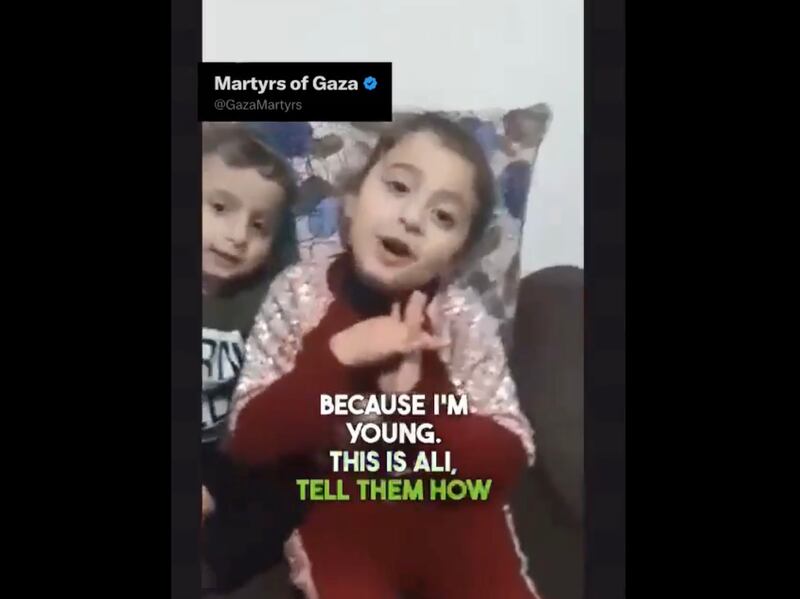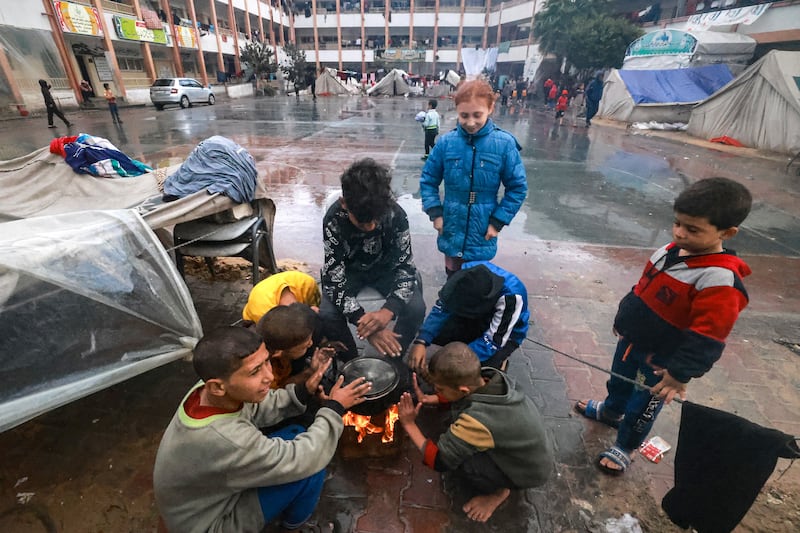This weekend, the moment each year when the western world briefly stops to celebrate children, and Christians celebrate a story about the birth of one child in particular, I want to tell you about another child. Her name is Ghina.
Picture her wearing a burgundy tracksuit with sequins on the shoulders. Her ponytail swings as she wanders into the kitchen. “Of course I go to kindergarten,” Ghina is telling her imaginary audience of YouTube fans, “because I’m young.”

Her mum has been making chocolate doughnuts using a recipe downloaded and stuck to the fridge. “Oh my,” says Ghina. She picks up a jar of chocolate spread. “I love it.” She is ad libbing now, but adorably, as she shows off her Barbie.
The video has a hypnotic quality because it reminds you of every little girl you know who loves sequins and doughnuts and performing, which is to say every little girl.
READ MORE
It’s hypnotic too, because you already know how it ends. Ghina Al-Kurunz will not grow up and become a YouTube star.
She died soon after this video was shot in an airstrike on October 23rd, which destroyed the building in Rafah where she was sheltering with her family. At the moment the building collapsed, two months ago exactly, Ghina’s mother was preparing beans with tomato soup and Ghina was dancing around shouting “red food, red food!”, her uncle Mahmoud later told a journalist for independent.co.uk.

There is another child whose story will not be celebrated this weekend: Farid Sallout and his brother Qossay. The two little boys were born in Gaza with a rare condition that meant part of their skulls never formed. Family members believe the defect may have been caused by tear gas during his mother’s pregnancy. Money raised by the Palestinian Children’s Relief Fund allowed them to travel to the United States for complex craniofacial surgery costing $250,000 (€229,000), which involved opening and rebuilding their skulls over 14 hours.
A video posted on the Shreveport Times in 2016 shows a hysterically giggling five-year-old Farid being tickled by doctors after his surgery. “Not a tear or a cry – he’s the strongest and bravest little boy that we’ve probably sent out,” his American host mother told the newspaper. They had to be brave, their grandmother explained. People in Gaza don’t baby their children, because they will need to be strong for whatever they may have to endure, for what they have already endured. Farid and Qossay’s house had already been bombed once in 2014. “I put everything in God’s hands,” the grandmother said.
[ Gaza’s humanitarian crisis compounded by heavy rain and floodsOpens in new window ]
Faith will only get you so far in Gaza. Farid and Qossay are both now dead too. They were killed in early November.
Ghina, Farid and Qossay are among the 7,000 children who have died in the relentless Israeli bombardment of Gaza since the brutal Hamas attacks of October 7th.
This has been a catastrophic year for the world’s children, and a shameful one for the adults who stood by and watched it happen. And not just to the children of Gaza.
Since Russia invaded Ukraine, more than 1,500 children have been killed or injured in that conflict. For half of the country’s 3.9 million schoolchildren, it is not safe to go to school.
Eleven children drown or go missing every week while trying to cross the central Mediterranean Sea in attempts to reach Europe, according to estimates by the UN children’s agency, Unicef. The humanitarian crisis in Sudan represents “the worst displacement crisis on earth for children” and has “seen killing, horrific sexual violence, torture and maiming of children on a scale not witnessed for a generation”, says Save the Children. Here, in one of the wealthiest countries in Europe, one in seven children are living in poverty.
It is an abysmal record. Humanity is failing in our most fundamental responsibility. But it is the scale of the deaths of children in Gaza and the fact that it is recorded in real time in full view of the world that makes this year so stunningly awful.
[ Another dismal day in Gaza but UN vote gives a glimmer of hopeOpens in new window ]
Nobody can say they didn’t know. Their bloodied, ashen faces are on every news website, on most television news programmes. We see the photographs and the videos of them when they were full of life and joy, and then we see their small bodies rolled tightly into plastic, laid out in hospital courtyards. And we look away because the scale of it is too overwhelming to contemplate, and because Santa still has stockings to fill and the shops are closing soon. This is how evil does its work: it doesn’t have to make good people complicit, it just has to make them turn away.
We understand this in Ireland and not, I think, as has been extensively suggested, because we have been victims of terrible things ourselves, but because of the terrible things we have done. We have only begun to come to terms with the scale of what was perpetrated on children in the State-funded, Catholic Church-run industrial schools, and the estimated 10,500 women and girls who passed through Magdalene laundries and their babies. It is that grim legacy, more than our history of colonisation, that makes it harder for us to turn a blind eye to Gaza.
In the midst of all the happy chaos this weekend – a joyous, giddy weekend that is all about children – we should take a moment to remember the children whose lives were brutally cut short this year. Farid: the little boy who didn’t cry. Ghina: a small chatty girl who should be playing with her Barbies and making YouTube videos, instead of buried under the rubble alongside 7,000 other small, broken bodies, in what Antonio Guterres has called the world’s graveyard for children.















